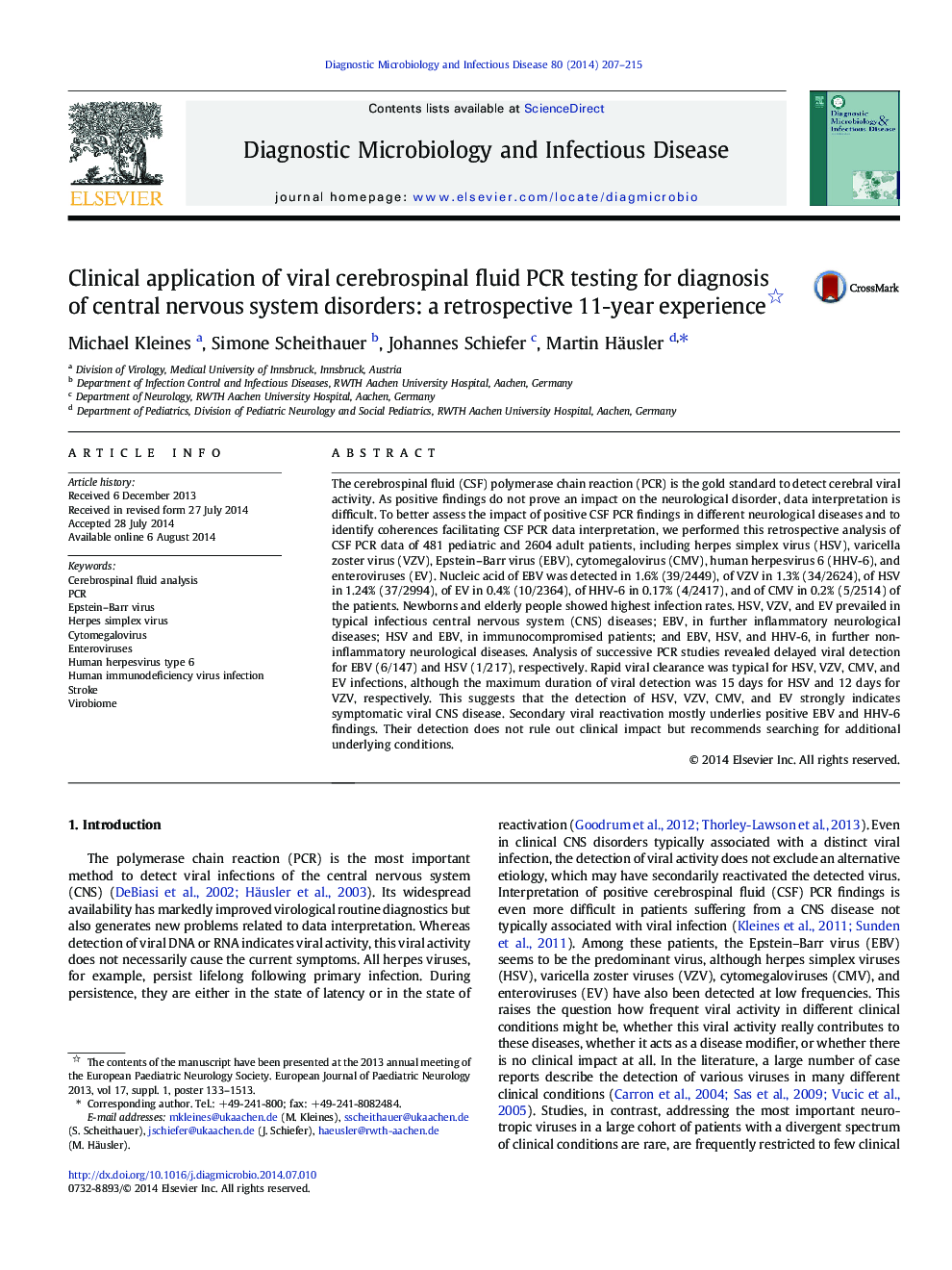| Article ID | Journal | Published Year | Pages | File Type |
|---|---|---|---|---|
| 3346975 | Diagnostic Microbiology and Infectious Disease | 2014 | 9 Pages |
•We share our long-term experience on CSF PCR for viral infections.•HSV, VZV, and EV prevail in diseases typically linked to infections.•EBV and HHV-6 are rare in neurological conditions typical for infections.•Clearance of the CSF from HSV is slower than clearance from VZV.•EV, HSV, and VZV infections are typical for aseptic meningitis.
The cerebrospinal fluid (CSF) polymerase chain reaction (PCR) is the gold standard to detect cerebral viral activity. As positive findings do not prove an impact on the neurological disorder, data interpretation is difficult. To better assess the impact of positive CSF PCR findings in different neurological diseases and to identify coherences facilitating CSF PCR data interpretation, we performed this retrospective analysis of CSF PCR data of 481 pediatric and 2604 adult patients, including herpes simplex virus (HSV), varicella zoster virus (VZV), Epstein–Barr virus (EBV), cytomegalovirus (CMV), human herpesvirus 6 (HHV-6), and enteroviruses (EV). Nucleic acid of EBV was detected in 1.6% (39/2449), of VZV in 1.3% (34/2624), of HSV in 1.24% (37/2994), of EV in 0.4% (10/2364), of HHV-6 in 0.17% (4/2417), and of CMV in 0.2% (5/2514) of the patients. Newborns and elderly people showed highest infection rates. HSV, VZV, and EV prevailed in typical infectious central nervous system (CNS) diseases; EBV, in further inflammatory neurological diseases; HSV and EBV, in immunocompromised patients; and EBV, HSV, and HHV-6, in further non-inflammatory neurological diseases. Analysis of successive PCR studies revealed delayed viral detection for EBV (6/147) and HSV (1/217), respectively. Rapid viral clearance was typical for HSV, VZV, CMV, and EV infections, although the maximum duration of viral detection was 15 days for HSV and 12 days for VZV, respectively. This suggests that the detection of HSV, VZV, CMV, and EV strongly indicates symptomatic viral CNS disease. Secondary viral reactivation mostly underlies positive EBV and HHV-6 findings. Their detection does not rule out clinical impact but recommends searching for additional underlying conditions.
